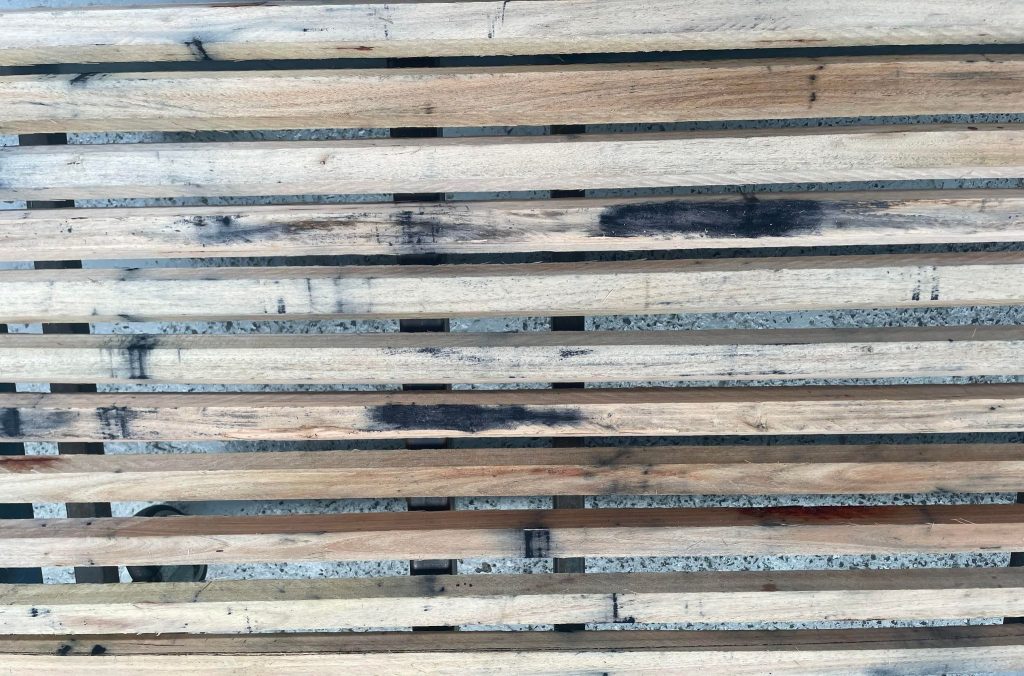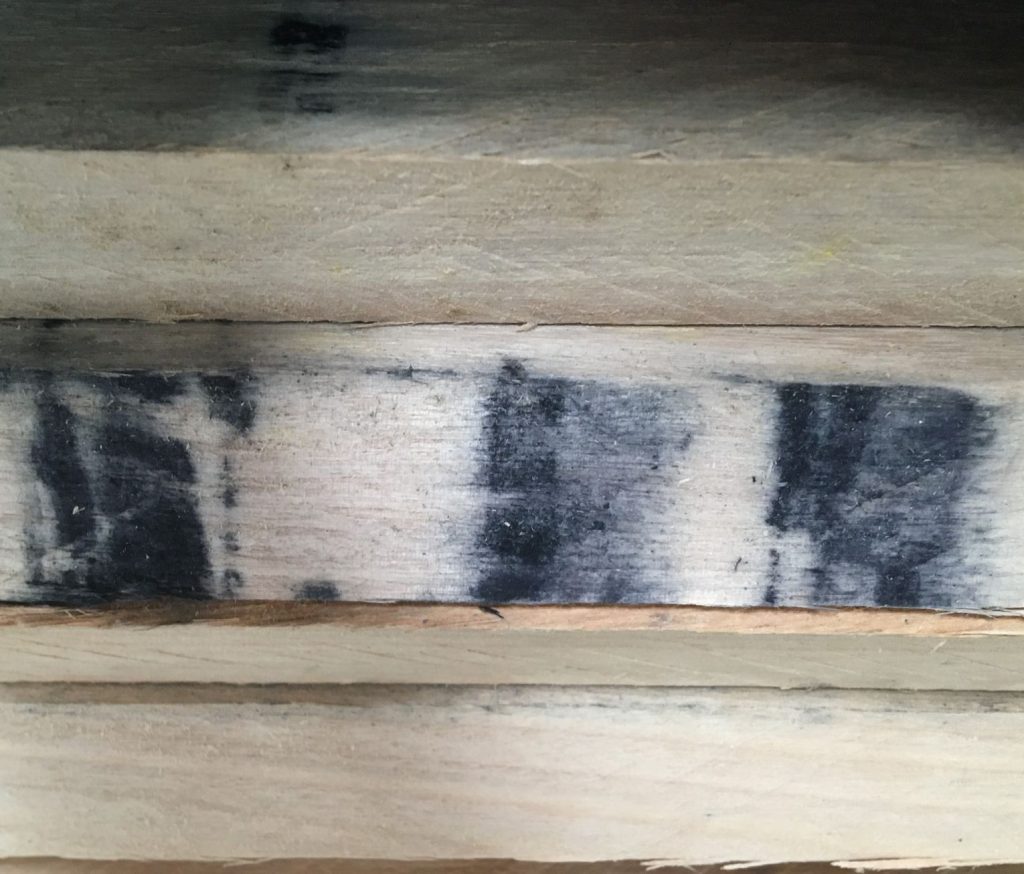

Cleaning Iron Staining On Timber
What is Iron Staining?
Iron stain, is a blue–black or grey discoloration that can occur on nearly all timber. The discoloration is caused by a chemical reaction between extractives in the wood and iron in steel products, such as nails, screws, fasteners, metal chains and other appendages. This often occurs after rain or dew, when water enables the extractives and iron to meet and react.


Example of roughsawn 50x23mm battens with iron staining.
How Is Iron Staining Caused?
Iron stains on hardwood can be a common occurrence, but with a bit of knowledge and planning you can minimize the chances of it appearing. Below are some common ways iron staining can occur on your timber.
Grinding & Metal Fragments
Iron stain problems have been associated with traces of iron left on wood from cutting or welding fragments, cleaning the surface with steel wool or wire brushes, iron dust from metalworking and even plant fertilizers. It is very important that all timber on site is kept well away from potential contaminates, always protected with plastic tarp and undercover out of the rain before installation.


Poor Quality Fixings
It is common for rust or stripped out metal filings from poor quality fixings to also chemically attack timber. This presents as dark staining around the fixing and usually affects the surface layer only. We recommend using stainless steel fixings to avoid metal contamination occurring
Green Unseasoned Hardwood
A further example where iron staining can occur is freshly cut, unseasoned, ’green’ timber where the wood has rubbed on steel rollers or chains during processing at the saw mill. The moisture in the unseasoned timber then reacts with the iron, leaving unsightly metal staining which is unavoidable in the milling process. It’s not uncommon to find evidence of this on the Radial Timber Board & Batten cladding or rough sawn unseasoned screen boards, especially during the wet winter months. Radial Timber can supply a tub of oxalic acid to help clean off these iron stains.

How To Treat And Clean Iron Staining?
If you are intending to leave the timber uncoated these marks will eventually blend in with the natural weathered timber over a period of time and be unnoticeable or alternatively, they can be easily cleaned off with an oxalic acid solution.
Iron staining occurring beneath a timber finish such as exterior oil is more difficult to rectify. The coating must first be removed before the metal staining can be treated with the appropriate cleaning product such as oxalic acid. Depending on the type of finish used, this may be as simple as applying multiple applications of the oxalic acid with some thorough brushing. After spot cleaning the affected areas, you will then need to reapply the exterior finish over the top.

The Oxalic acid cleaning is best done using a 10% solution of Grey Deck Cleaner to water mix. Once the oxalic acid has dissolved into the water it can be applied by using a stiff brush, spray bottle or broom. Work the solution into the affected areas and let dry. Wash areas thoroughly with water and make sure timber is completely dry before applying any exterior finish.
The same technique is also used to rejuvenate timber which has weathered off as seen in the video below.


